
Title: 4D Printing – Why now is an exciting Time
Plenary Presentation
Dr. Thorsten Pretsch
Fraunhofer IAP, Germany
Abstract
Four-dimensional (4D) printing is a technology that enables material functions to be introduced into components in an additive manufacturing (AM) process. For example, the use of shape memory polymers allows the fabrication of thermoresponsive objects. The associated gain in functionality offers several advantages. For example, a high degree of control over thermosponsiveness can be achieved. It also eliminates the need for time- and energy-consuming thermomechanical treatment that is often required for shape memory polymers; the thermoresponsive objects can be taken directly from the printer.
Here we report on our latest approaches to manufacturing thermoresponsive objects using fused filament fabrication. We consider particularly exciting the possibilities of producing objects with one-way or two-way shape memory effects, the latter being a technology that has only recently become available. In this respect, 4D printing can be understood as a key technology for the production of the next generation of programmable materials. In the future, their reuse in 4D printing or other polymer processing methods can further increase their sustainability and thus initiate important steps towards a circular economy for functional materials with comparable property profiles.
The technology emerged in the Fraunhofer Cluster of Excellence Programmable Materials CPM (PSP element 40-01922-2500-00002).
Biography
Thorsten Pretsch has received his doctorate in Chemistry from the Free University of Berlin in 2004 and has been conducting research for more than 15 years in the field of shape memory polymers. Currently, he is responsible at Fraunhofer Institute for Applied Polymer Research IAP for the division Synthesis and Polymer Technology and the working group Shape Memory Polymers. Since 2019 he is also deputy scientific coordinator at Fraunhofer Cluster of Excellence Programmable Materials CPM. Thorsten Pretsch has published 33 research articles in SCI(E) journals and is involved as inventor in more than 25 patent applications.
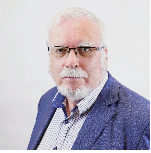
Title: Property mapping during 3D printing: A study on morphological development
Plenary Presentation
Prof. Geoffrey Robert Mitchell
Polytechnic of Leiria, Portugal
Abstract
3D printing is one of the key tools of Industry 4.0 which enables the creation of products directly through digital definition. Often referred to as additive manufacturing due to the layer by layer approach to fabrication , it streamlines mass customization and allows the production of highly complex objects; promoting new shapes obtained by generative design and weight reduction.
This technology unveils a new era of design possibilities; however, most developments are focused, merely, on shape reproduction precision and the development of new feeding systems and materials. This work is focused on a shift in design for additive manufacturing, where the defined polymer properties, by means of the adjustment of the process conditions, constitute a decision-making variable. In order to evaluate the morphology of semicrystalline polymers during extrusion-based 3D printing, in-situ time-resolving small and wide-angle X-ray scattering measurements were performed at the ALBA synchrotron light source in Barcelona. The ultimate goal of this research is to develop a material property mapping methodology during semicrystalline polymer melt extrusion-based 3D printing. For this purpose, printing trials were performed with low-density polyethylene, and it was possible to observe a correlation between the extrusion rate, writing speed, and the level of anisotropy induced by the manufacturing parameters.
Biography
Geoffrey Mitchell is Professor and Coordinator Researcher at the Centre for Rapid and Sustainable Product Development at the Polytechnic of Leiria in Portugal. He is Adjunct Professor at the Sri Jayachamarajendra College of Engineering, Department of Polymer Science and Engineering in Mysore India and Visiting Medical Physicist Oxford University Hospitals NHS Foundation Trust, Oxford UK. Geoffrey Mitchell carried out his doctoral work at the University of Cambridge in the UK and subsequently held a post-doctoral fellowship at Cambridge and a JSPS Fellowship at Hokkaido University in Japan. Prior to his current position he was Professor of Polymer Physics at the University of Reading, UK and from 2005, the founding Director of the Centre for Advanced Microscopy at Reading. His research work bridges physics, biology, chemistry and technology and he is passionate about the opportunities afforded by Additive Manufacturing. He has pioneered the use of in-situ x-ray and neutron scattering in the study of polymer processing and has most recently extended this concept to injection moulding. He has published over 400 scientific books and papers. He is a Fellow of both the Institute of Physics and the Royal Society of Chemistry as well as the Royal Society for the Encouragement of Arts, Manufactures and Commerce and a Member of the Institute for Physics and Engineering of Medicine
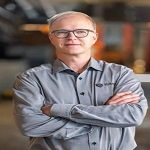
Title: Imagine and Implement
Plenary Presentation
Dr. Pekka Ketola
3DStep Oy, Finland
Abstract
When the Internet started to be available to all at mid 1990’s there was a boom of private, public and commercial homepages. Homepages seemed to be the killer application. Today, Internet is everywhere with applications and systems nobody could envision at those times.
Industrial 3D printingtoday is availableto all as reliable and well maturedtechnology. It is applied to create prototypes, spare parts and as full fledged production. However, the applications are often quite straightforward and obvious. Most companies have not yet found their ways to create value with 3D printing.
3D printing has potential to disrupt productdesign, manufacturing and logistics in similar unforeseeable ways as Internethas done with communication. But something is slowing down the adoption and renewal. In our view, technology is not the bottleneck for wider use of 3D printing, but the capability to envision new products, solutions and production is.
In this talk we will discuss the challenge to Imagine. Why it is so hard to design radical future products? How designers and teamsshould develop themselves? How education should be developed? How the future can already be seen as concreteexamples?
Biography
Pekka Ketola has completed his PhD (2002) from the Department of Human-Technology Interaction, University of Tampere, Finland. He has been working at Nokia corporation in various user experience and innovation management roles during 17 years. Since 2012 Pekka has been building innovation, light electric mobility and 3D printing industries as entrepreneur, founder and innovator. He is frequent speaker for innovation and industrial 3D printing related topics. Pekka’s favorite question is ”What would Leonardo da Vinci do?”
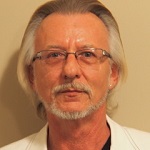
Title: Additive Manufacturing and Construction 3D Printing as a tool to address Housing Affordability
Plenary Presentation
Mr. Edward Macnab
Chief Executive Officer and Co-Founder of 3DPHC – 3D Printed Homes Corporation, Canada
Abstract
Ever since humanity left natural caves, and long before recorded history, we have used some form of masonry to build shelter. We need protection from the elements and a host of animals that see us as an easy meal. Stone based construction is strong and durable, well suited to those who have given up the wandering lifestyles of old.
Advances in robotics, artificial intelligence, mathematics, chemistry, machine vision, architecture, and engineering are facilitating dramatic changes to masonry, the way it is placed, and the structures that it can be used to build. This is the future of Construction 3D Printing.
Entrepreneurs and companies large and small, including some multi-national behemoths are moving money and research into this new building technology, seeking to reduce costs and improve outcomes even further. 3D printed homes now exist on all continents except Antarctica, and plans are in place to 3D print human habitations on Mars.
We will discuss the challenges, physical, environmental, and social that must be overcome to ensure that this technology revolutionizes the construction industry and spreads equity in housing opportunity.
Biography
Ed Macnab is Chief Executive Officer and one of the core group of founders of 3DPHC – 3D Printed Homes Corporation in Calgary, Canada. 3DPHC is a socially conscious start-up that truly places people ahead of profits. He has had a long career spanning the construction industry, the Canadian oilfield, telecom design and manufacture, finally retiring as an International IT Project Manager. Our VISION is to see every family living in a home that is affordable and meets their needs. Our MISSION is to reduce the cost of housing by using advanced technology and materials.
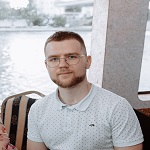
Title: Development of small spacecraft frames manufactured by 3D printing with continuous composite fiber
Speaker Presentation
Mr Nikita Glushko
Application Engineer, Luxembourg
Abstract
Over the past few years, the number of satellite launches into the Earth orbit has drastically increased. Most of them are actually small satellite castellations launched into Low Earth orbit. Improvement of weight efficiency of such satellites is commercially important considering the large number of launches into orbit.
Combined application of 3D printing, topology optimization and composite materials was made as a contribution to a designated goal. As the object of the research, the CubeSat structure of various form-factors was chosen as the most open and widely used type of small spacecraft. 1U and 3U structures consisting of thin flat panels were designed for ease of subsequent 3D printing. The structures were then optimized topologically with the aim of weight reduction while still maintaining vibration, strength, and stiffness criteria for load-bearing capability. Verification calculation was also performed taking into account the orientation of continuous fibers within the panels. The composite fiber co-extrusion technology of Anisoprint was used for manufacturing of these panels. As a result of the work, the weight of both 1U and 3U CubeSat structures was reduced by up to 50% in comparison to traditional ones made of aluminum while still maintaining its load-bearing capacity.
Biography
Entered Bauman Moscow State Technical University in 2016, department of rocket-space composite structures. In 2020 graduated with a bachelor's degree, in the same year entered in mastership to the same department. Graduated with a master's degree in 2022. Since 2020 working in the Anisoprint SARL as an application engineer, 3d printing company that develops desktop and industrial 3D printers for printing strong and lightweight parts of composite materials using patented CFC technology. For the past three years, has been involved in static analysis of composite structures and the development of topologically optimized structures for 3D printing with continuous fiber.

Title: Innovations in 3D Printing - Fluid Additive Manufacturing
Speaker Presentation
Mr. Ty Canion
Founder and CEO of Canion3D Inc., Germany
Abstract
The use of silicone in additive manufacturing is widely becoming a cross-industry standard when building models for various applications. A technique in 3D Printing that is at the forefront of this standard is Fluid Additive Manufacturing (FAM) which our partners patent at San Draw 3D. FAM is an additive manufacturing technology designed for printing viscous liquids like silicone. FAM-powered silicone 3D printers can print one-part silicone and two-part silicone. Furthermore, FAM-powered silicone 3D printers are highly flexible in printing multiple silicones and water-soluble support material. 3D printers that are FAM-powered with silicone ensure the best balance between performance and price.
Biography
Ty Canion is the founder and CEO of Canion3D Inc. a technology company focused on the Additive Manufacturing industry, which he founded in 2015. He is a 15 year veteran of the U.S. Air Force and has worked in various domains of technology across several industries. He has completed his Master’s Degree in Business Administration with concentration of Information Systems from the University of Arizona GC and his bachelors in Entrepreneurship Studies also from UAGC.
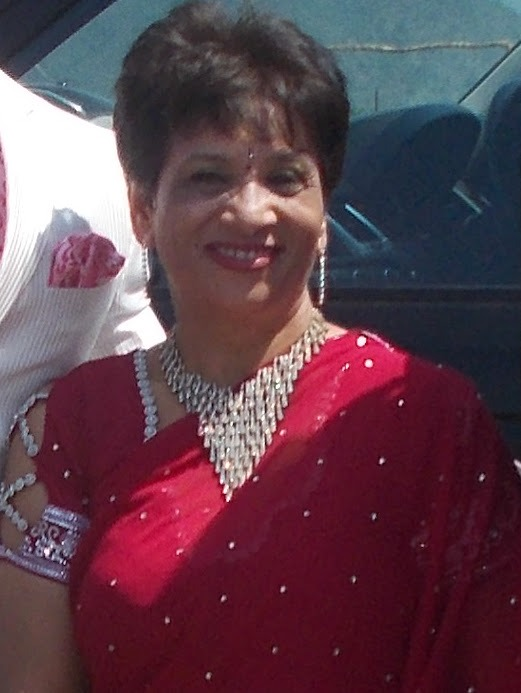
Title: 3D Bio-Printing of Human Organs: Bio-Printing of Skin for burns victims
Keynote Presentation
Mrs. Jayshree Ramsook-Khiali
Director, Health Spot Life Therapy, South Africa
Abstract
Bio - printing is an emerging field in regenerative medicine. Healthy skin is an essential requirement to lead a healthy life. Due to burns significant cause of trauma, accidents and deep wounds, non-healing cuts, the focus of patient carehas shifted from just survival to facilitation of improved functional outcomes. Typically, burn treatment, especially in the case of extensive burn injuries, involves surgical excision of injured skin one requires rapid treatment of skin or reconstruction of the injured skin and skin substitutes.Treatment of skin injury is done through transplants, which comes from donors or the patient body. Conventional skin substitutes do not contain all skin cell types and do not facilitate recapitulation of native skin physiology. Three-dimensional (3D) bio - printing for reconstruction of burn injuries involves layer-by-layer deposition of cells along with scaffolding materials over the injured areas. Skin bio- printing can be done either in situ or in vitro.Both these approaches are similar except for the site of printing and tissue maturation. The different fabrication techniques: laser-based, extrusion-based and ink jet-based bio- printing, are defined,elaborated and compared.
Biography
I, Jayshree Ramsook - Khiali - One of the Director of Health Spot Life Therapy collaborated with Mr. Sipho Thomas Magwasa who is currently licensed to establish a Private Hospital to Introduce Stem Cell Treatments in His Hospital. Started as a volunteer paramedic and thereafter had three and a half years of experience as a paramedic at the South African Provincial Ambulance Services, based at the R.K. Khan Provincial Hospital. Due to challenging rescue times, my work prompted me to pursue in stem cell research at length. Constantly following the news in America, the ban on embryonic stem cell research. However my research started on 17 October 2005 were I had the opportunity to communicate with Dr. Direndra Rajaruthnum, a cardiac thoracic surgeon about my extensive research on stem cell infusions, however I was inspired by his moral support to pursue stem cell treatments. An opportunity to work with medical academics and fund raise for the following patients : My case 1. Rose Lee Usher, a leukemia patient urgently required Umbilical Cord Blood Stem Cell to save her life, due to not receiving a match in South Africa the Umbilical Cord Blood was flown from Boston , America and now she recovered and well. Another case-2- Mrs. Rosheen Mahabeer diagnosed with Sarcoidosis of the lung since 17 October 2016. She had to live with an oxygen tank 24 hours a day , urgently required stem cell infusion, however she received stem cell infusion at a private clinic, thereafter lived for four years. Therefore I had taken the initiative to apply for a Provincial Lottery - a Society Lottery to assist in fundraising for cancer treatment. Participated for the draft promulgation of the Society Lotteries Act 57 of 1997. Had been employed as a ward administrator for ward 68 for the African National Congress. A meeting was held at the South African Premiers Office in Kwa- Zulu Natal dated 09 November 2011, where I was instructed by the Premier Dr, Laurence Zweli Mkhize, to introduce stem cell treatments for burns. Thereafter my projects were referred to the South African National South African Health Department, since 10 March 2014. Had an opportunity to meet Sir, Richard Branson where I was enlighten about stem cell infusion at length. I submitted projects proposals such as, Dendritic Cell & Natural Killer Cell Immunotherapy For cancer patients and other stem cell related treatments including 3D Bio - Printing. I have addressed these major concepts with Highness Sheik Hamdanand Various Other Government Departments in the United Arab Emirates.
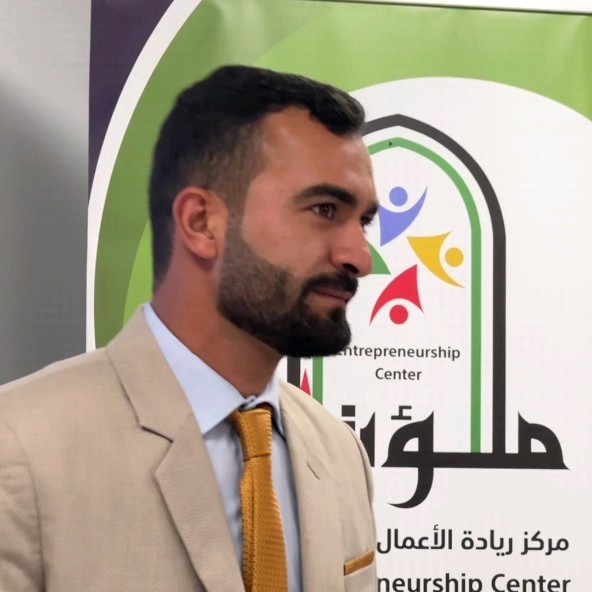
Title: Green crystal cells
Speaker Presentation
Mr. Rashed Alsihamat
Entrepreneur, Jordan
Abstract
Semiconductors, which is a classification of states of matter, which combines conductive and insulating properties in the materials and chemical elements that depend on it, and it was built upon in the manufacture of BN-Junction layers, from which diodes and electronic chips are made from them, as well as the basis of solar cells, and it depends mainly on the element silicon.
What I conducted research on in my graduation project at Mu'tah University / College of Engineering is to develop a composition of semiconductor materials that do not depend on silicon, but other elements that have more stability and the ability to develop to become more flexible and give higher efficiency as it can have multiple uses and wide applications.
Biography
Rashed Alsihamat lives in Jordan holds a Bachelor’s degree in Electrical Engineering, Power and Control from Mutah University / Al-Karak, Jordan. He completed two research projects i.e., Social manufacturing solutions under the title HKCMB and green crystal cells. The world is still working on implementing the two projects. One of which is in the beginning of establishment in partnership with the Entrepreneurship Center at Mutah University, and the other is under development and study and there are still many ideas for implementation that are being prepared for and scientific inventions that will be a global revolution in the world of manufacturing and energy solutions.
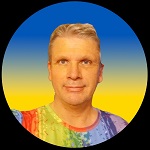
Title: Spot Matching System (SMS). A colour palette suited for product design and colour correct cross-media (Print, Web, Television) marketing of said product.
Keynote Presentation
Dr. Ingi Karlsson
CEO and owner, Spot-Nordic, Europe
Abstract
The Spot Matching System is created for so-called Brand Design. Each colour of the SMS colour palette (3 versions are available, each consisting of a total of 869 colour shades) has been vetted to remain correct in all relevant colour spaces for ISO standardized CMYK printing (for coated and uncoated paper), for websites (sRGB) and for HDTV/Television (REC. 0709). The idea is to enable colour consistent marketing of brands with the goal that consumers should start to know the brand only based on it's colours/colour combination.
The goal is to add the standard colours of SMS to applications meant for both textile and 3D design to ensure maximum colour consistency and close the visual gap between real world products and how they appear in marketing.
Biography
Ingi Karlsson is the owner and CEO of Spot-Nordic, Iceland. Ingi worked as a litho Printer and prepress worker for close to 20 years before entering into sales along with R&D that began in 2003 and lead to the launch of the Spot Matching System in December 2018. Ingi was the first Ugra Certified Expert (PSO) in 2007. Ingi represents the Icelandic Standards Organization in the TC130 group of ISO and has written several articles on colour and colour consistency, many of which are available on his profile on Linkedin.
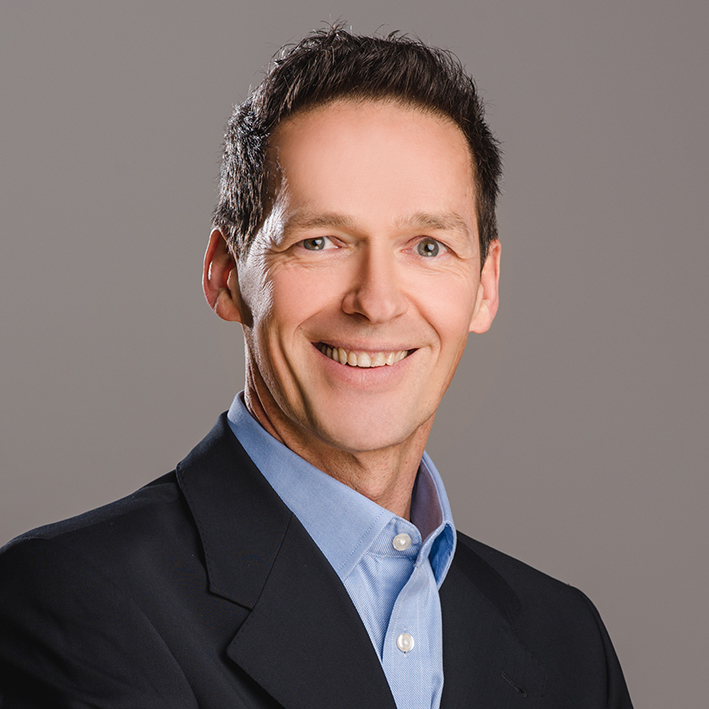
Title: Do we really need more mines? Production of secondary raw materials from recycled e-waste and industrial (metal) waste. Lossless and chemical free!
Speaker Presentation
Rudolf von Stokar
Owner and Founder of Reco Ventures and E-Waste Recycling Global Ltd Germany
Abstract
Reco Ventures AG is sponsoring Start-Ups of ‘green’ projects. E-Waste Global is our most sucessful start-up and recycling electrical and electronic components such as computers, laptops, mobile phones and industrial batteries from e.g. Tesla, scooters completely and lossles without the use of chemicals or incineration and produces secondary raw materials from this ‘waste’.
The European Union is already demanding that the input weight of the components corresponds to the recycled material. No losses allowed. We meet this requirement since 2018.
These secondary raw materials that are gained from the ‘waste’ are then used to produce high-purity and high-fine metal powders and alloys that can be used again in industry.
E.g. for highly conductive (+125%) drive cables for electric vehicles and extremely lightweight housings for electric drives.
Many of the customers use these powders in AM (additive manufacturing) and take advantage of our wide range of special alloys to obtain appropriate material properties.
The lithium contained in the batteries is recycled, as are aluminium, cobalt, nickel and other valuable raw materials that are used again to build batteries.This is closing the cycle of materials. #kreislaufwirtschaft #circularity
Biography
In recent years, Rudolf von Stokar has successfully accompanied numerous companies through the critical start-up phase and market launch in German industry. Particular focus here has been on: Software-over-the-air, driver assistance systems, alternative drives, Car2X, navigation up to autonomous driving. Rudolf Stokar has an international and technically sound education. He lives in Munich as a single father with his two daughters.
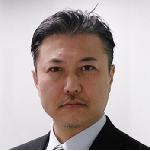
Title: Direct Additive Manufacturing of Ceramic Components for Functionally Modulated Structures
Speaker Presentation
Soshu Kirihara
Joining and Welding Research Institute Osaka University Japan
Abstract
In stereolithographic additive manufacturing (STL-AM), 2-D cross sections were created through photo polymerization by UV laser drawing on spread resin paste including nanoparticles, and 3-D models were sterically printed by layer lamination. The lithography system has been developed to obtain bulky ceramic components with functional geometries. An automatic collimeter was newly equipped with the laser scanner to adjust the beam diameter. Fine or coarse beams could realize high resolution or wide area drawings, respectively. As the row material of the 3-D printing, nanometer sized metal and ceramic particles were dispersed into acrylic liquid resins at about 60 % in volume fraction. These materials were mixed and deformed to obtain thixotropic slurry. The resin paste was spread on a glass substrate with 50 μm in layer thickness by a mechanically moved knife edge. An ultraviolet laser beam of 355 nm in wavelength was adjusted to 50 μm in variable diameter and scanned on the spread resin surface. Irradiation power was automatically changed for an adequate solidification depth for layer bonding. The composite precursors including nanoparticles were dewaxed and sintered in the air atmosphere. In recent investigations, ultraviolet laser lithographic additive manufacturing (UVL-AM) was newly developed as a direct forming process of fine metal or ceramic components. As an additive manufacturing technique, 2-D cross sections were created through dewaxing and sintering by UV laser drawing, and 3-D components were sterically printed by layer laminations with interlayer joining. Through computer-aided smart manufacturing, design, and evaluation (Smart MADE), practical material components were fabricated to modulate energy and material transfers in potential fields between human societies and natural environments as active contributions to Sustainable Development Goals (SDGs).
Biography
Soshu Kirihara is a doctor of engineering and a professor of Joining and Welding Research Institute (JWRI), Osaka University, Japan. In his main investigation “Materials Tectonics as Sustainable Geoengineering” for environmental modifications and resource circulations, multi-dimensional structures were successfully fabricated to modulate energy and materials flows effectively. Ceramic and metal components were fabricated directly by smart additive manufacturing, design and evaluation (Smart MADE) using high power ultraviolet laser lithography. Original stereolithography systems were developed, and new start-up company “SK-Fine” was established through academic-industrial collaboration.
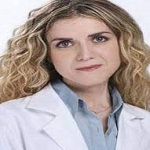
Title: The Additive Manufacturing in the biomedical sector: applications and future perspectives
Speaker Presentation
Prof. Ilaria Cacciotti
University of Rome Niccolò Cusano, Italy
Abstract
The additive manufacturing has found application in the biomedical sector, mainly in the odontoiatric, neurosurgery, ortophedic and craniomaxillofacial ones, where the number of publications has regularly grown over the last few years [Murtezani et al., 2022].
Five major areas for the biomedical application can be identified: medical models (presurgery training [Saceleanu et sl., 2021]), surgical implants, surgical guides, external aids, bio-manufacturing [Tuomi et al., 2014]. 3D printing presents several advantages with respect to the traditional production approaches: shortened operation time, less blood loss, reduced morbidity of surgical interventions, less infection/inflammation occurrence, higher aestethical results,better correspondence between the custom made implant and the defect contours [Al-Moraissi et al., 2015].
Nowadays, despite many promising results from several in vitro and in vivo studies, the gap between the 3D printing scientific research in the biomedical sector and its translation to the clinical practice is still wide [Di Piazza et al., 2021], also due to the complex regulation aspects and the recent EU Regulation on medical devicesand on in vitro diagnostics. Two main challenges in developing the next-generation of AM processes can be cited: the improvement in the speed and resolution of AM processes with lower energy consumption, and the development of new 3D printing materials with tunable mechanical, chemical, physical properties.
The main 3D printing drawback consists in the high cost of acquisition. However, currently many efforts have been and are aimed at reducing the overall costs, decreasing prices of both the 3DP hardware and of the used materials.
Biography
Ilaria Cacciotti is Full Professor of Biomaterials & Tissue Engineering and Materials Science & Technology at University of Rome "Niccolò Cusano". She graduated in Medical Engineering at the University of Rome “Tor Vergata” (Master of Science Award ‘Fondazione Raeli’), completed the Ph.D in Materials Engineering (Ph.D Thesis Award ‘Marco Ramoni 2011, Ph.D Thesis AIMAT Award 2012) and obtained the II Level Master degrees in “Forensic Genetics” and in "Protection against CBRNe events". She is expert in the synthesis/processing/characterisation of biocompatible nanostructured materials, particularly for applications in the biomedical/environmental/agri-food sectors. She is member of the Editorial Board of several international journals, including Applied Science-MDPI, Applied Surface Science Advances-Elsevier, Frontiers in Biomaterials, Open Journal of Materials Science- Bentham Science. For her research activity, she received more than 20 awards, incuding the L’ORÉAL-UNESCO Italy for Women and Science 2011
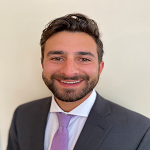
Title: Competition will Advance AM
Speaker Presentation
Dr. Noah Mostow
Founder of Visualize Manufacturing, USA
Abstract
The additive manufacturing (AM) industry is ripe with innovation, creating a competitive marketplace for equiptment manufacturers, contract manufacturers, material producers, and software providers. Relative to the entire manufacturing sector, AM remains a very small proportion of the industry. For the technology to grow and gather a larger market share, competition is needed.
Regardless of industrial sector, application, or market size, competition advances the industry by providing innovations and a new perspective on what is possible. This presentation includes examples from different markets and geographic locations. It provides encouragement on why we need to embrace new companies into the AM industry and see how for the technologies market share to grow, we must all work together.
Biography
Noah Mostow received his master’s of science from the Colorado School of Mines in 2020. He has since been a principal author for Wohlers Report 2021 and 2022, in addition to writing articles for Manufacturing Engineering and Metal AM Magazine. Mostow provides a different perspective to the AM industry with his background in mechanical engineering, biomedical engineering, market research, and data analytics.

Title: Calculation of mechanical properties of truss structures using RVE modeling method
Speaker Presentation
Mr. Bilal Sen
Balikesir University, Turkey
Abstract
Lattice structures are widely used in additive manufacturing. Basically, cage structures that will reduce weight without sacrificing mechanical properties are created in computer programs for additive manufacturing parts. Since these created structures consist of too many surfaces and details, applying finite element analysis directly to the produced lattice piece requires serious processing power. Instead of this direct application, which requires high processing power, with the RVE (Representative Volume Element) model approach, a small cell of the lattice model is handled and the mechanical properties of that cell are calculated. These calculation results are assigned to the entire model as material properties. In this way, such complex structures, spongy structures, internal structures of bones, and lattice structures can be examined using accurate mechanical properties and little processing power. The RVE model of this study was made with Material Designer in Ansys. The volumetric density of the unit cell of the lattice structure created with Ansys material designer is 20%. The mechanical properties of the lattice structure created with this occupancy rate could be examined by RVE modeling.
Biography
Bilal Şen is currently working in the additive manufacturing industry and studying mechanical engineering at Balikesir University.
“ Will be updated soon...”
+91 9491 456 452
Door No.200, Immidhihalli Main Road, Whitefield-560066, Bangalore, India
About Us
Global Scientific Guild organizes conferences and webinars to promote quality research and real world impact in an atmosphere of true international co-operation between scientists, doctors, professors, practitioners, engineers and industry by bringing together the world class renowned personalities to discuss the latest developments and innovations at one common platform.